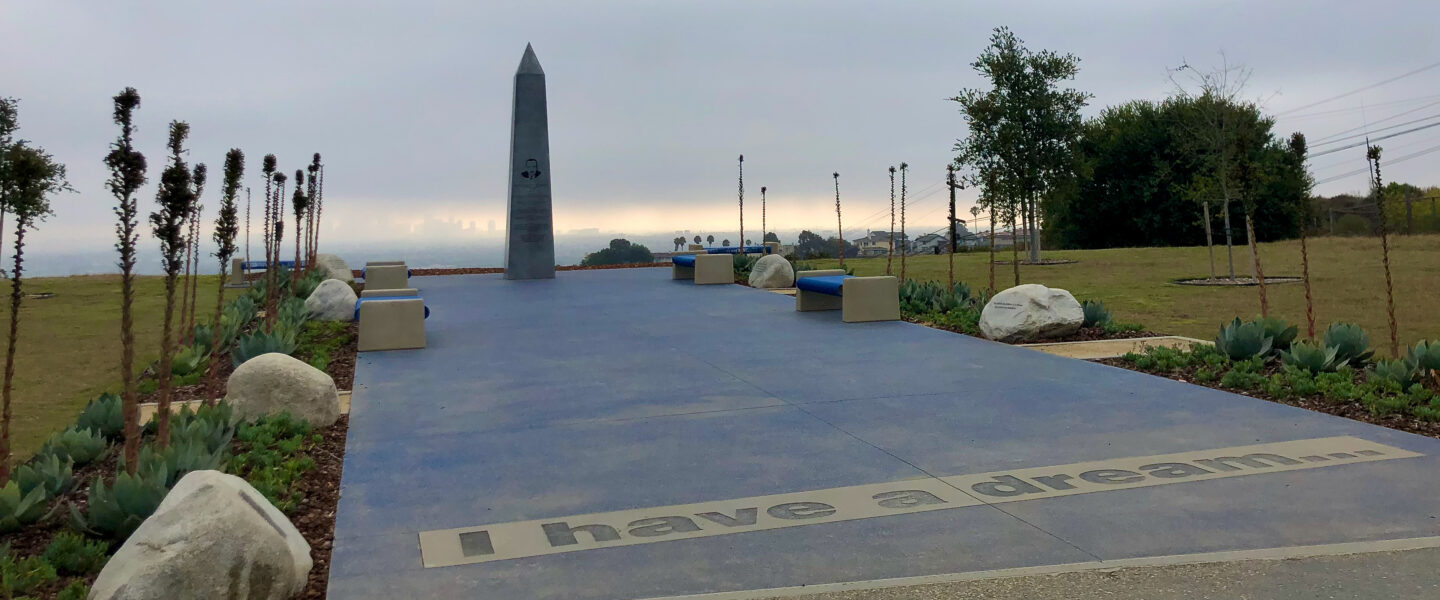
(This is part 4 in our racial justice essay series. Read more in our other posts: introduction, taking a systems view, getting proximate, taking stock)
“I have a dream that one day this nation will rise up and live out the true meaning of its creed: ‘We hold these truths to be self-evident, that all men are created equal.”
—Rev. Dr. Martin Luther King, Jr.
Martin Luther King’s compelling dream, as shared with thousands of people on the National Mall that day in August 1963, helped so many see the future he described. His powerful imagery both harkened back to our country’s founding principles and passionately painted a vivid goal: a future in which, Dr. King envisioned, his own children “will not be judged by the color of their skin but by the content of their character.”
We still aren’t there yet. In 1963, Dr. King’s dream was bold and brazen. It inspired those fighting for civil rights and called out to those who benefited from our country’s status quo. In 2020, new voices are envisioning a future that is possible if we can acknowledge and address the systemic forces that got us to where we are now. This current movement for racial justice includes calls for re-imagining nearly every sector of our society—from housing to health care, from education to community safety, policing, and criminal justice.
Today’s leaders, like Dr. King, are raising an inspiring rallying cry, a call to action. Yet, for many of us, there is not an easily discernible path forward. In my time at Blue Garnet, I have grown to respect the process that it takes to put structure around this kind of ambiguity. In the movement for Black lives, we are witnessing (and participating in) that messy and uncomfortable, yet beautiful, process of defining a dream for racial justice and working toward it.
When inspired to work for change, how do we move forward toward action? How do we enter into the process?
One of the first steps is to define the future that want to see. We need to get specific. At Blue Garnet, we aim to “begin with the end in mind,” referencing one of business icon Stephen Covey’s core principles. “To begin with the end in mind,” according to Covey, “means to start with a clear understanding of your destination.” For an organization, a clear definition of their DEI and other racial equity goals—rooted deeply in their mission and work—will empower members of the organization to navigate toward that more equitable future.
Today, many are looking to take action for racial justice in a way that is grounded in their own organization’s mission. Let’s take the example of increasing the diversity of your organization’s board of trustees. While a worthy goal, simply aiming to “diversify the Board” is not enough. We must drive to clarity on what achieving this goal would look like. What elements of diversity are we talking about? (Race, gender, age, representativeness of the population served, etc.?) If we aim to increase the racial diversity of the board, what is the numeric, measurable goal we hope to achieve? By when?
The goal itself will determine what strategies and actions are needed to bring that goal to life. Consider what it would mean to build a board comprised of 50% Black, Indigenous, and People of Color (BIPOC)—versus a board comprised of 10% BIPOC. While either of these may be an increase from the present board representation, the effort and action needed to achieve the former goal may be quite different than the strategies to achieve the latter.
To help you begin with the end in mind and define your organization’s dream for equity, start by asking questions such as:
- What would racial equity look like for, and at, our organization, in light of our mission?
- How will we know when we’ve achieved it?
- With our mission in mind, what outcomes and real impact will serve to move the needle on racial justice?
As a reminder, your Board and executive leadership should not define your organization’s dream in isolation. At Blue Garnet, we seek to include the voices of all stakeholders when setting organizational goals. Once the goals are clarified—with buy-in from the community and other partners—you can then turn to implementation, or what we refer to as “making it real.”
Your vivid dream of increased equity will be a galvanizing force at your organization and for the people whom you serve. With a distinct target in mind, you can work to map out the various steps and interim milestones needed to achieve the overarching goal. With those in place, you can then define the tasks and people who need to be involved to make each step happen. Please reach out with your thoughts and reactions, or if you would like our help articulating your organizational goal and navigating the changes that it may bring.
This is your moment—our moment—to define a more just future for your organization, your community, and our country. “Let us rise up tonight with a greater readiness,” as Dr. King intoned in his Mountaintop sermon. “Let us stand with a greater determination. And let us move on in these powerful days, these days of challenge to make America what it ought to be.”
For more on racial justice from Blue Garnet, check out these other posts in our summer blog series.
